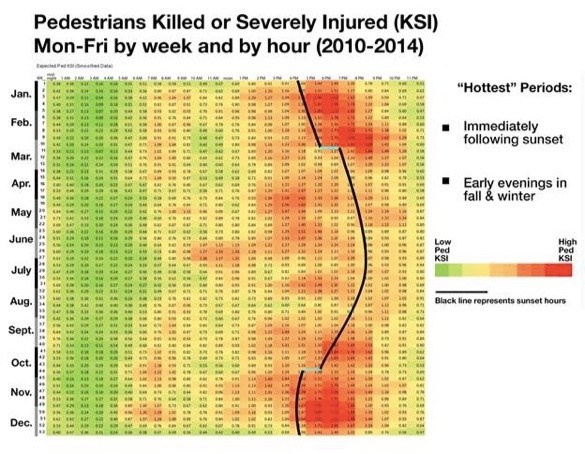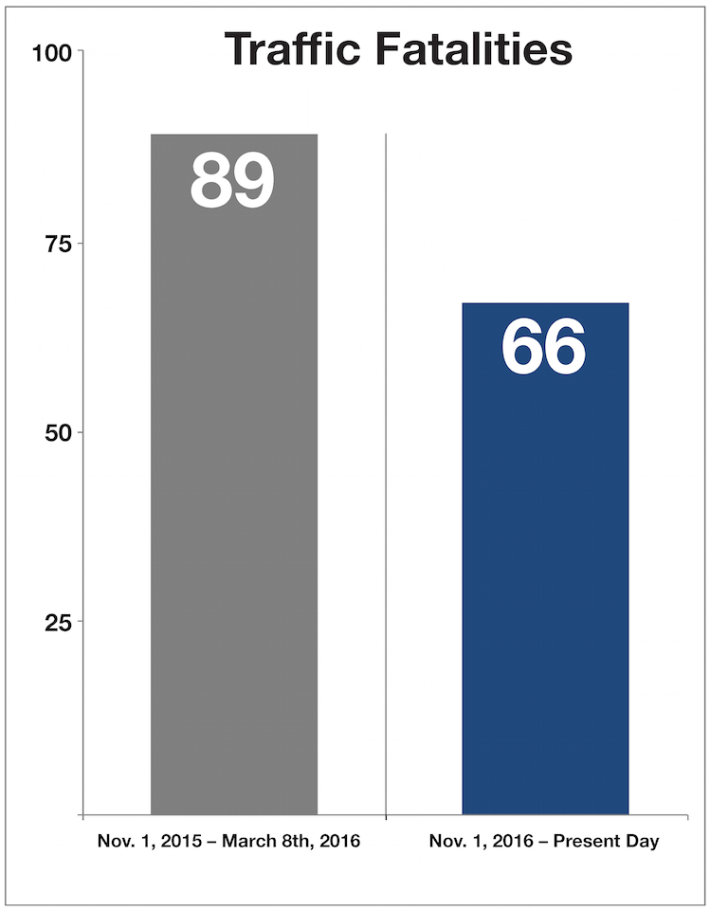In the four months after DOT and the NYPD launched the "dusk and darkness" traffic enforcement and education campaign, traffic fatalities dropped 26 percent compared to the previous year, the agencies announced this morning. The initiative sprang from DOT's analysis showing a high concentration of pedestrian deaths and severe injuries during early winter evenings, when it gets dark during the p.m. rush.
From November to February, summonses for failure-to-yield increased 17 percent compared to the previous year, according to NYPD. Speeding summonses also went up, by 11.4 percent. Meanwhile, DOT officials say they handed out palm cards with the "dusk and darkness" campaign message to a million drivers.
In those four months, 66 people were killed in traffic on NYC streets, down from 89 the previous year.
The improvement is substantial and suggests the campaign made an impact, but it's difficult to draw conclusions about causation. The number of traffic deaths in a relatively short period sometimes swings up or down for no perceptible reason.
NYPD does not release geographic data about traffic enforcement activity, so there's no way to overlay changes in summonses and traffic deaths on a map. The city also did not release information about the time of day that fatalities occurred, or about changes in severe traffic injuries, which are less subject to random variation.
Trottenberg said DOT is working on data analysis that measures the impact of its Vision Zero public awareness campaigns. "We can't always prove perfect causality," she said, "but one thing we've seen in general is when we've done campaigns... we saw a real uptick in public awareness."
If the seasonal improvement is sustained in the future, it will strengthen the case that the initiative saves lives.
DOT and NYPD will continue the "dusk and darkness" campaign next winter, Trottenberg said, and will push other targeted education/enforcement campaigns during the year.







